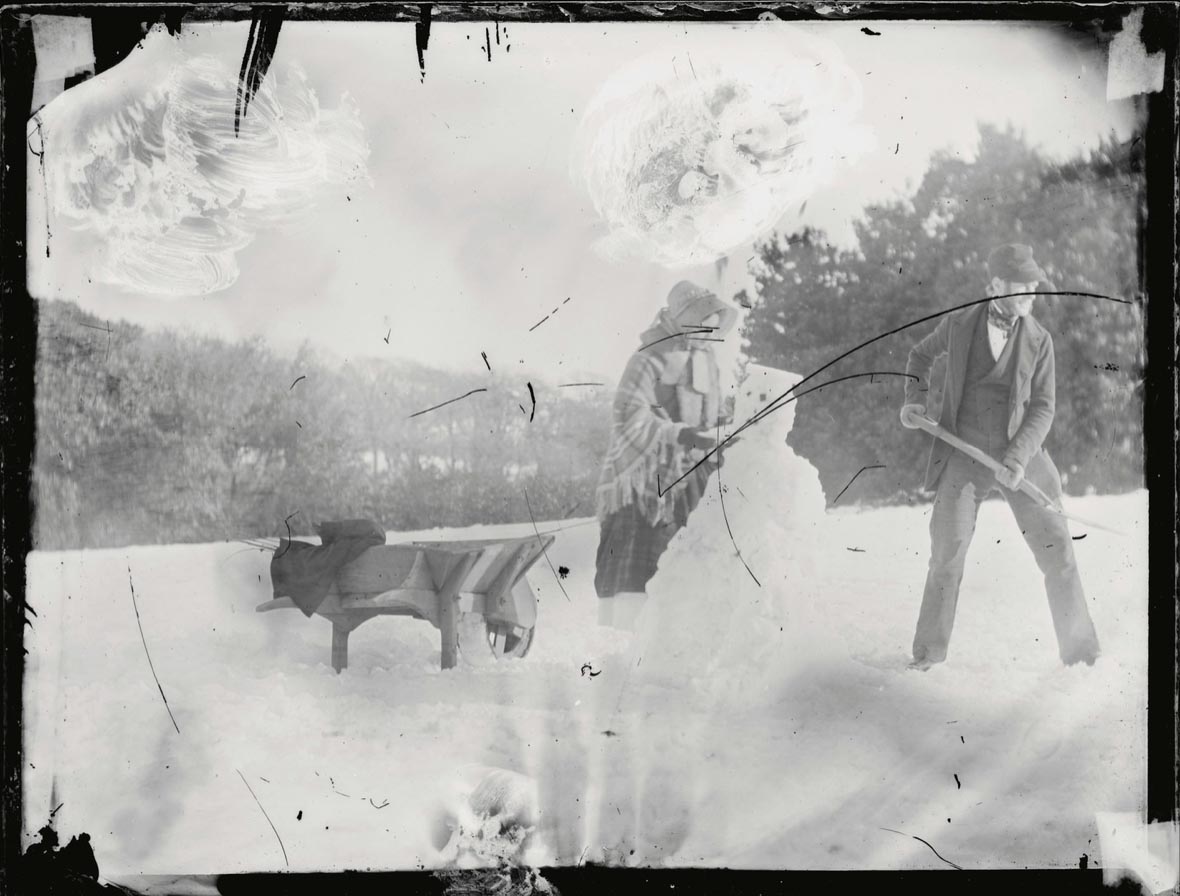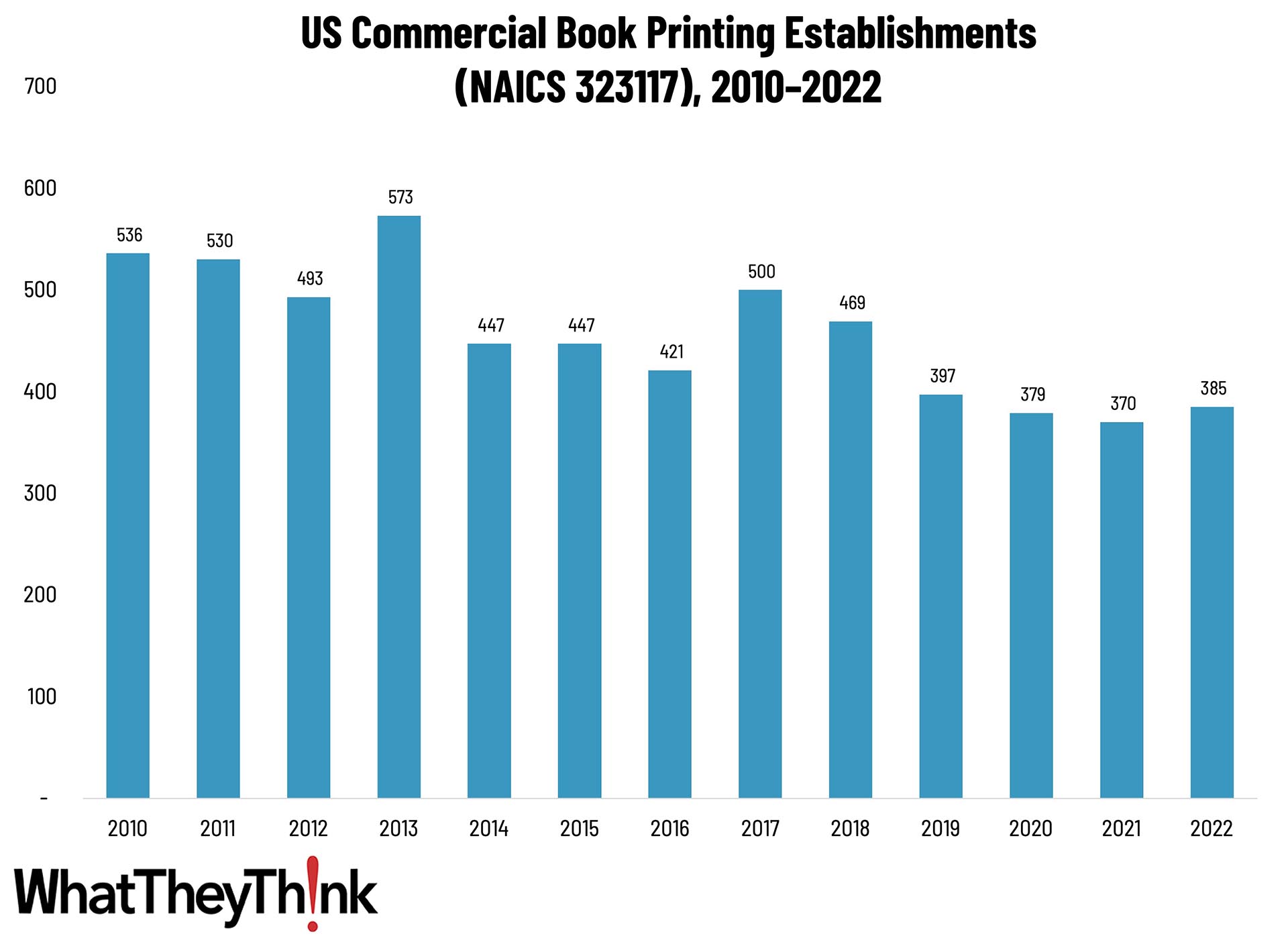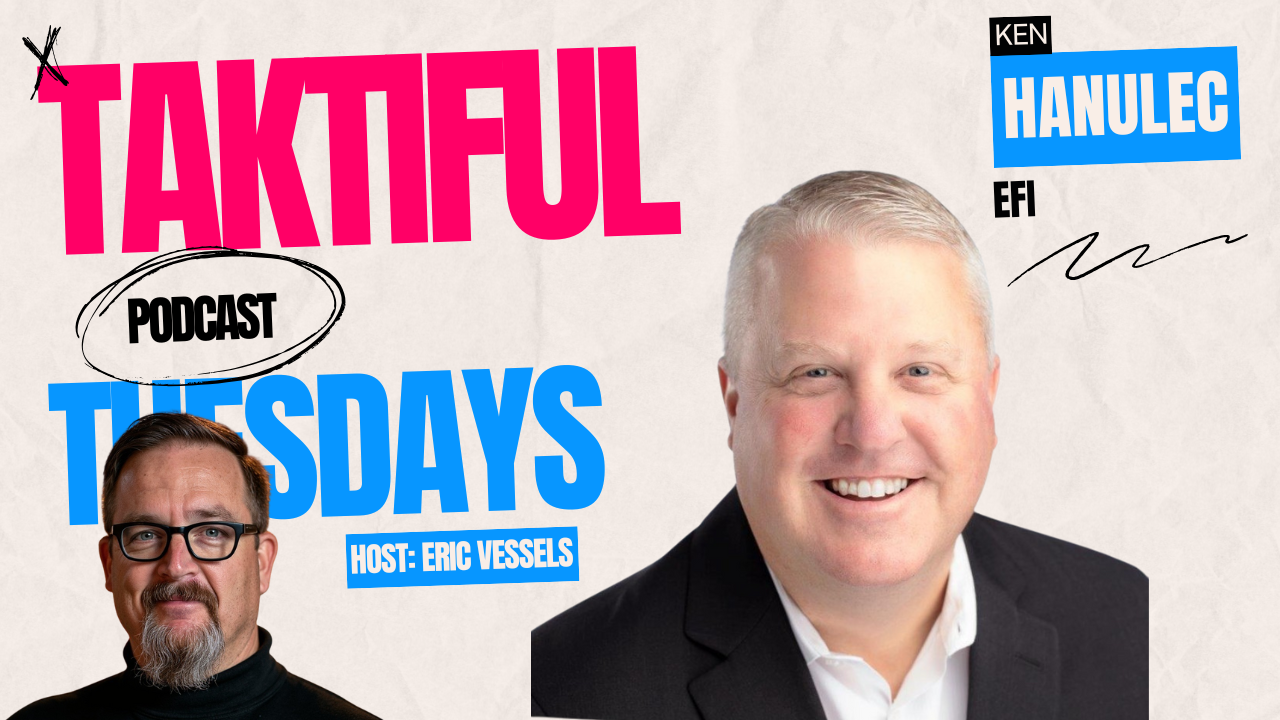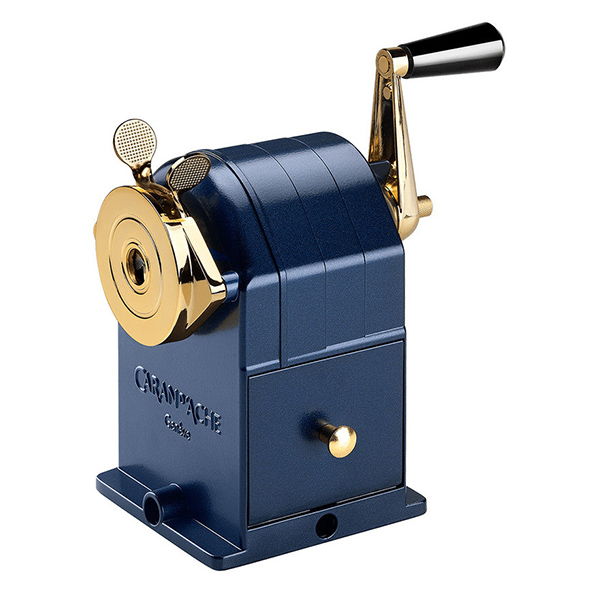FloorWide?
Many of us are familiar with robot vacuums that automatically clean floors. But HP recently introduced a kind of Roomba-like robot that prints on floors. It is designed specifically for the construction industry to help automate a laborious, time-consuming process.
In building construction, after a site has been selected, cleaned, and prepped, and detailed blueprints have been drawn up, the layout stage begins. This is where all the specs included on the blueprints need to be transferred to the floor—where walls and doors go, etc. As you can imagine, this all needs to be precise, lest builders get halfway through construction and have to tear things down because they were incorrectly laid out.
It’s a time-consuming process that an involve teams of surveyors, but the new HP robot—the SitePrint—requires a single operator. Says Gizmodo:
As the name implies, the SitePrint is more or less a rolling printer equipped with sensors that allows it to avoid obstacles. Instead of relying on GPS, which can be inaccessible if the robot is operating indoors, the SitePrint instead connects to a base station featuring surveyor tools that’s manned by a human operator. The surveyor still needs to determine exactly where the robot needs to do its thing, but once oriented, the robot can autonomously work from digital blueprints to roll around a site and mark where everything needs to go.
Interchangeable printing tools allow the robot to lay down solid lines or dashed lines depending on what the blueprints call for, and it can also print text labels where needed to help reduce confusion between teams. HP has also developed a collection of various inks tailored to different surfaces, environmental conditions, or durability requirements. If the robot’s hard day of work is washed away by an overnight rain and needs to do it all again the next day, it’s not really saving much time.
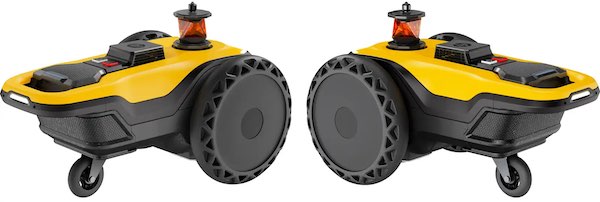
According to HP, the SitePrint robot has been tested in more than 80 construction projects, including airports, hospitals, parking garages, and even residential builds. It’s not available just yet, although early access to it in North America starts this month. A bigger rollout—as it were—is expected next year.
Pretty neat.
Graphene Is in the Bag
Was it a good week for graphene news? It’s always a good week for graphene news! Haydale is supplying South Korean plastics developer NeoEnpla with functionalized graphene nano-platelets (GNPs) to be used in food packaging, specifically food storage zipper bags and biodegradable plastic bags. Says Graphene-Info:
Since food packaging primarily acts as a barrier to moisture and gases (including contaminants) that ordinarily lead to a reduction in the shelf-life of food, the new graphene-enhanced food storage bags can keep the food fresher for longer thanks to the anti-bacterial, UV and barrier properties of functionalized graphene. The graphene-composites polymer bags demonstrated their own oxygen blocking effect keeping food such as bread, cake and rice containing carbohydrates fresher for longer compared to non-graphene bags.
Graphene-enhanced zipper bags have been found to have 31% greater tensile strength than non-graphene LLDPE (linear low-density polyethylene) zipper bags, at the same reducing weight and thickness. And they’re recyclable, too.
What’s Your Color IQ?
X-Rite poses this challenge: “Are you among the 1 in 255 women and 1 in 12 men who have some form of color vision deficiency? If you work in a field where color is important, or you’re just curious about your color IQ, take our online challenge to find out.” It’s based on the Farnsworth Munsell 100 Hue Test and taking it on an uncalibrated monitor probably introduces all sorts of inaccuracies, but, hey, it’s quick and saves $750.
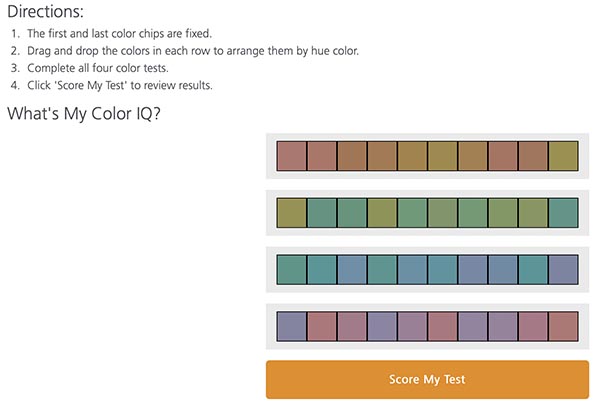
Oh, sure, why not? It’s not like we have actual stories to work on…
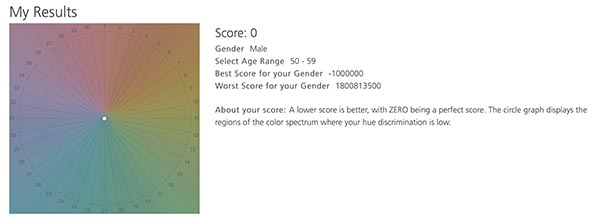
We’re not sure how a score can be better than perfect, much less a million points better, but we’ll take it. This proves then that there is no excuse for how we dress.
Pains in the S
Anyone attempting to learn English discovers very quickly that they need to reckon with the English language’s bezonkers and seemingly haphazard approach to forming plurals. Sure, in most cases you just add “s”—but not always. There is but one woman (or man) but more than one women (or men). You have one foot, but two feet. And while we have one goose and many geese, we can have one moose but never any meese. Oh, and then you also have some cases (sheep, fish) where the plural is the same as the singular. Why is this?
Rob Watts of Rob Words—who last week explained color word origins—now takes on a singular journey into plurals.
Odd plurals fall into several categories; holdovers from Old English, when there were many ways to make words plural (such as by adding -an or -en, which thankfully did not survive, except for oxen); words derived from languages—like German—that change the vowel sound to make a word plural; words that come from the days when English actually had gendered nouns (masculine, feminine, and neuter, like, say, French does today)—words for animals tended to be neuter (even if the animals were not) and in Old English, you formed the plural of a neuter noun by not changing it at all. Which is why we have one fish, two fish (red fish, blue fish), one sheep, two sheep, etc.
Anyway, check it out:
AI-Yi-Yi, Part the Infinity: But Is it Art?
If you have been following our Around the Web series, you have seen an increase in AI image generation, for good and ill. Over at Creative Good (via the @images_ai Twitter account) a little of both, as some classic painting were “run through the AI meat grinder.”

The full Creative Good column (for paid members only) takes a deep dive into AI image generators, including the risks that they pose to artists (and society at large), as well as some specific AI image generators. We suspect we’ll be seeing more of these in the not-too-distant future so it’s best to be forewarned.
The Dead Talk Back
And while AI image generators have their issues, this is just downright creepy.
Marina Smith, a 87-year-old woman who passed away in June, was able to address the mourners at her own funeral in the UK — sort of, at least, thanks to the power of artificial intelligence.
The woman was able to surprise the guests at the funeral in the form of a “holographic conversational video experience,” created by a startup called StoryFile.
… StoryFile used 20 cameras to film the woman answering around 250 questions prior to her death. This data was then fed into a software tool that was able to virtually recreate her after she passed.
Technically, it’s probably just an advanced version of just watching a pre-recorded video of her, which no one would probably have a problem with. Depending on the application, though, it can be a little weird:
A holographic representation of the former Screen Actors Guild president Ed Asner was able to answer questions from attendees at his own funeral earlier this year.
“Nothing could prepare me for what I was going to witness when I saw it,” Matt Asner, the actor's son, told Axios last month. Other attendees were “a little creeped out by it,” Asner added, because it was “like having him in the room.”
“You know what? You got AI. I hate AI!”
Queen Bees
After the death of Queen Elizabeth II, there was one important task that needed to be accomplished: her bees needed to be told of her death. Rolling Stone magazine seems bemused by this, but it’s actually a rather old tradition throughout Europe. Says Wikipedia:
Telling the bees is a tradition in many European countries in which bees would be told of important events in their keeper’s lives such as births, marriages and departures and returns in the household. If the custom was omitted or forgotten and the bees were not “put into mourning” then it was believed a penalty would be paid, such as the bees leaving their hive, stopping the production of honey or dying.
It was also the subject of a poem by John Greenleaf Whitter, and, more recently, British progressive rock group Big Big Train. Sadly, singer and songwriter David Longdon’s own bees needed to be told of his untimely passing in November, 2021.
There are weirder traditions.
Oh, NASA…
Has Boaty McBoatface taught us nothing?
There was:
— Ice Giant Missions ??(@ExploreIGO) September 10, 2022
Voyager - @NSFVoyager2 ??
Cassini-Huygens - @CassiniSaturn ??
New Horizons - @NASANewHorizons ??
Juno - @NASAJuno ??
Perseverance - @NASAPersevere ??
We want to know, what would YOU name the #Uranus Orbiter & Probe Mission? ?????#letsgoback #icegiants #namethemission pic.twitter.com/o6vLLgdvMo
What could possibly go wrong?
Besides, why crowdsource this? As a fictional President once said, “NASA’s great at naming things. Mercury, Apollo, Atlantis, the Sea of Tranquility, the Ocean of Storms...”
Sunglasses at Night
Via Core 77, a new entrant in the wearable monitor space: Lenovo, whose new T1 glasses are designed to be a “virtual monitor,” with Micro OLED displays that provide 1920x1080 dpi resolution per eye.
“Compatible with many of today’s modern smartphones, tablets, and laptops with full-function USB-C, the Lenovo Glasses T1 offers superb image quality, high-efficiency optics for extended battery life, and is lightweight so users can explore and enjoy content well beyond the limited screen size of mobile devices.”
Lenovo specifically says this is not an AR or VR device per se, but are rather targeted at gamers as well as people “working on private business-critical documents on a PC in public spaces.” Although watching The Blues Brothers is the first thing that comes to mind.

One caveat:
The frames can accommodate prescription lenses within them, i.e. between your eyes and the screen. It’s too bad the technology isn't such that the screens themselves could be adjusted for your vision, obviating the need to buy another set of lenses.
The T1 glasses will be for sale in China this year, with a rollout in “select markets” next year.
Around the Webb, Part the Continuation: A Tarantula Caught in the Webb
NASA’s James Webb Space Telescope is up and running and has captured images of thousands of never-before-seen young stars in what is known as the Tarantula Nebula, a nickname for a stellar nursery officially called 30 Doradus.
At only 161,000 light-years away in the Large Magellanic Cloud galaxy, the Tarantula Nebula is the largest and brightest star-forming region in the Local Group, the galaxies nearest our Milky Way. It is home to the hottest, most massive stars known. Astronomers focused three of Webb’s high-resolution infrared instruments on the Tarantula. Viewed with Webb’s Near-Infrared Camera (NIRCam), the region resembles a burrowing tarantula’s home, lined with its silk. The nebula’s cavity centered in the NIRCam image has been hollowed out by blistering radiation from a cluster of massive young stars, which sparkle pale blue in the image. Only the densest surrounding areas of the nebula resist erosion by these stars’ powerful stellar winds, forming pillars that appear to point back toward the cluster. These pillars contain forming protostars, which will eventually emerge from their dusty cocoons and take their turn shaping the nebula.

Caption from NASA: In this mosaic image stretching 340 light-years across, Webb’s Near-Infrared Camera (NIRCam) displays the Tarantula Nebula star-forming region in a new light, including tens of thousands of never-before-seen young stars that were previously shrouded in cosmic dust. The most active region appears to sparkle with massive young stars, appearing pale blue. Credits: NASA, ESA, CSA, STScI, Webb ERO Production Team
The things we can do.
Countdown to Halloween: Creepy Claws!
Are you (or, more probably, your children) looking for a creepy Halloween costume accessory and a good way of grabbing a little more Halloween candy? Well, engineer Sergii Gordieiev of The Q explains how to make a set of fully articulated wooden claws that fit over your fingers.
We’ve Heard of a Bed of Rice, But…
Here’s a term to be reckoned with: “user-configurable blanket.” In some sense, aren’t all blankets user-configurable? Maybe, but not like this. Says Core 77, “Japanese spa chain Goku no Kimochi has developed a machine-washable, user-configurable blanket based on udon noodles.”
OK…here are udon noodles…

And here is the noodle-based blanket (the official site is in Japanese so we have no idea what they call it)…
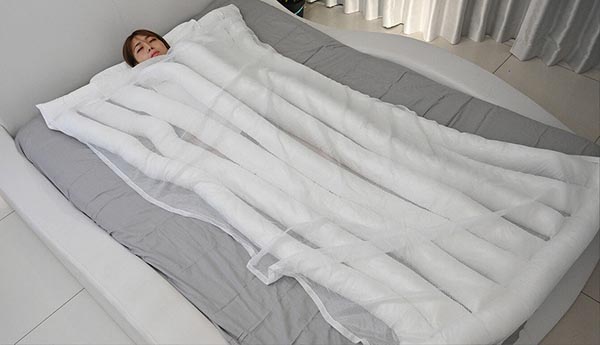
“The temperature can be adjusted comfortably at any time. If you feel hot, unfold the noodles, and if it’s cold, close the noodles.
“The lace in the photo is included. Perfect for adjusting the temperature in summer and autumn. In winter, blankets can be used instead of lace.”
Or, indeed, the noodles. Perhaps more bedding should be based on Japanese menu items. We think a Tempura-pedic mattress would be very comfortable.
This Week in Printing, Publishing, and Media History
September 12
1940: Cave paintings are discovered in Lascaux, France.
1959: Bonanza premieres, the first regularly scheduled TV program presented in color. (And full color, not just Lorne Greene.)
1812: American engineer, businessman, and inventor of the rotary printing press Richard March Hoe born.
1891: American publisher Arthur Hays Sulzberger born.
1892: Alfred A. Knopf, Sr., American publisher and founder of Alfred A. Knopf Inc., born.
1952: Canadian drummer Neil Peart born.
September 13
1898: Hannibal Goodwin patents celluloid photographic film.
September 14
1321: Italian writer Dante Alighieri dies (b. 1265).
1814: The poem Defence of Fort McHenry is written by Francis Scott Key. The poem would later be used as the lyrics of The Star-Spangled Banner.
September 15
1835: HMS Beagle, with Charles Darwin aboard, reaches the Galápagos Islands.
1889: American humorist, newspaper columnist, and actor Robert Benchley born.
1890: English crime novelist, short story writer, and playwright Agatha Christie born.
September 16
1880: The Cornell Daily Sun, the U.S.’s oldest, continuously-independent college daily, prints its first issue in Ithaca, N.Y.
1959: The Xerox 914, the first successful photocopier, is introduced in a demonstration on live television from New York City.
1959: The Xerox 914, the first successful photocopier, is introduced in a demonstration on live television from New York City.
2016: American director and playwright Edward Albee dies (b. 1928).
September 17
1787: The United States Constitution is signed in Philadelphia.
1877: English photographer, developer of the Calotype Process Henry Fox Talbot dies (b. 1800).
1920: The National Football League is organized as the American Professional Football Association in Canton, Ohio.
September 18
1709: English lexicographer and poet Samuel Johnson born.
1851: First publication of The New-York Daily Times, which later becomes The New York Times.
1927: The Columbia Broadcasting System (CBS) goes on the air.
1970: American singer-songwriter, guitarist, and producer Jimi Hendrix dies (b. 1942).





